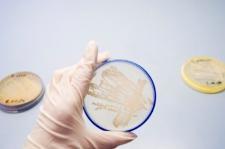Wound Bed Preparation- Control of Bacteria
We’ve known for a long time that careful preparation of the wound bed prior to dressing application is crucial to wound healing. In fact, many of the dressings currently in use in today’s market depend on the clinician’s attention to wound bed preparation in order to effectively do their job. In addition to management of necrosis and exudate, restoration of chemical balance and correction of cellular dysfunction, bacterial balance is a key component of wound bed preparation.
Bacterial Burden
All wounds, at least all chronic wounds, harbor a certain number of bacterial microorganisms. Assessing the importance of these bacteria on the wound is the tricky part of wound bed preparation. It’s important to discriminate amongst wound colonization, wound contamination and wound infection. Several factors determine bacterial burden:
- Presence of replicating bacteria in the wound
- Virulence of the bacteria or microorganism
- Bacterial load
- Host reaction to the bacteria present
Research has shown that a wound bed bacterial load of 10⁵ and 10⁶ organisms per gram will have an adverse effect on wound healing- this is irrespective of organism lethality. Because infection is often more concentrated in the wound compartment rather than on the wound surface, wound cultures are often not helpful in determining wound bioburden. Therefore, ‘treating’ wound infection should not be based solely on the results of wound culturing, but should also take into account the condition of the wound i.e. signs and symptoms of infection, such as increased pain, drainage and odor. In addition, wound conditions can change over time, and you should be prepared to respond whenever the condition of a wound changes or wound healing slows.
Host Factors
Whether or not a wound that is colonized with bacteria progresses to the infection stage is highly dependent on host factors, including:
- Nutritional status
- Presence of immunosuppression (diabetes, steroid use, chemotherapy, autoimmune disease)
- Presence of edema
- Smoking
- Presence of cardiovascular disease/peripheral vascular disease
Factors such as these can impact host health, including the ability of the host’s body to fight infection.
Effects of Biofilm
The presence of a biofilm, which can be thought of as a collection of attached microorganisms surrounded by a protective glycocalyx coating, can inhibit efforts to control wound bioburden. A biofilm can become a focus of infection, and the protective coating protects the biofilm from the killing effects of antibiotics.
As can be seen, recognizing and managing the balance of microorganisms is one of the most important components of wound healing. Next week, we’ll talk about the importance of exudate management in wound healing.
If you enjoy reading and learning about the principles of wound care management, perhaps it’s time to think about pursuing a career as a certified wound care professional. Wound Educators is the premier wound care education website for online wound care learning.
Sources:
Dowsett, C & Schultz, G. (2012). Wound bed preparation revisited. Wounds International, February 3(1).
Vowden, K & Vowden, P. (2002). Wound bed preparation. World Wide Wounds, Updated March 2002.

